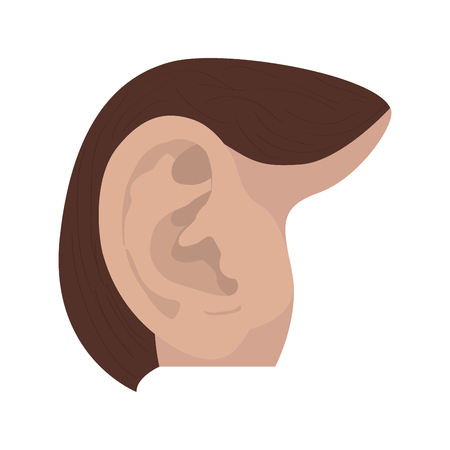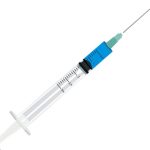1. Introduction to Cheek Fillers
Cheek fillers have become a popular cosmetic treatment for individuals looking to enhance their facial contours and restore lost volume. These injectable dermal fillers provide a non-surgical way to achieve a youthful, lifted appearance with minimal downtime.
What Are Cheek Fillers?
Cheek fillers are gel-like substances, typically made from hyaluronic acid or other biocompatible materials, that are injected into the mid-face area. They help add volume, define cheekbones, and smooth out wrinkles or fine lines.
Benefits of Cheek Fillers
Many people choose cheek fillers because they offer immediate results and a more youthful look without the need for invasive surgery. Here are some key benefits:
| Benefit | Description |
|---|---|
| Non-Surgical | Avoids the risks and recovery time associated with surgery. |
| Instant Results | Visible enhancement immediately after the procedure. |
| Minimal Downtime | You can return to daily activities shortly after treatment. |
| Naturally Enhances Facial Contours | Adds definition and lifts sagging cheeks. |
| Customizable Treatment | The amount and placement of filler can be tailored to individual preferences. |
Why Do People Choose Cheek Fillers?
The aging process often leads to volume loss in the cheeks, resulting in a sunken or tired appearance. Cheek fillers help restore this lost volume, giving the face a more refreshed and youthful look. Additionally, younger individuals may opt for fillers to enhance their natural bone structure and achieve well-defined cheekbones.
2. Types of Cheek Fillers and Their Longevity
When considering cheek fillers, its essential to understand the different types available and how long they typically last. The longevity of fillers depends on their composition, how your body metabolizes them, and other factors like lifestyle and skincare routine. Below is a breakdown of the most popular cheek filler types and their expected duration.
Hyaluronic Acid (HA) Fillers
Hyaluronic acid fillers are among the most commonly used for cheek enhancement due to their natural-looking results and reversibility. They provide volume by attracting water molecules, keeping the skin plump and hydrated.
Popular HA Fillers:
- Juvederm Voluma
- Restylane Lyft
- Belotero Balance
Longevity of HA Fillers:
| Filler Type | Typical Duration |
|---|---|
| Juvederm Voluma | 12-24 months |
| Restylane Lyft | 12-18 months |
| Belotero Balance | 6-12 months |
Collagen-Stimulating Fillers
Unlike HA fillers, collagen-stimulating fillers work by triggering your bodys natural collagen production over time. These fillers provide longer-lasting results but may take a few months to show full effects.
Popular Collagen-Stimulating Fillers:
- Sculptra
- Radiesse
- Bellafill
Longevity of Collagen-Stimulating Fillers:
| Filler Type | Typical Duration |
|---|---|
| Sculptra | 2-3 years |
| Radiesse | 12-18 months |
| Bellafill | 5+ years (semi-permanent) |
Choosing the Right Filler for You
The best filler for you depends on your aesthetic goals, budget, and how long youd like the results to last. If youre looking for a temporary option with reversible effects, hyaluronic acid fillers might be ideal. However, if you prefer longer-lasting results with gradual collagen stimulation, collagen-stimulating fillers could be a better fit.
Factors That Affect Filler Longevity
Apart from the type of filler used, several factors can influence how long your cheek fillers last:
- Metabolism: Faster metabolisms break down filler more quickly.
- Lifestyle Choices: Smoking, sun exposure, and poor skincare habits can shorten filler lifespan.
- Treatment Area: Areas with more movement may see quicker filler absorption.
If youre unsure which filler is best for you, consulting with a qualified injector will help determine the right choice based on your facial structure and desired outcome.

3. Factors That Affect Cheek Filler Duration
Several factors influence how long your cheek fillers will last. While the average duration ranges from 6 to 24 months, individual results can vary based on metabolism, lifestyle choices, and the type of filler used.
Metabolism
Your bodys metabolism plays a significant role in how quickly fillers break down. Those with a faster metabolism may notice their fillers fading sooner than others. This is because the body naturally processes and absorbs the filler material over time.
How Metabolism Affects Filler Longevity
| Metabolism Type | Expected Duration |
|---|---|
| Fast Metabolism | Around 6-12 months |
| Average Metabolism | Around 12-18 months |
| Slow Metabolism | Around 18-24 months |
Lifestyle Choices
Your daily habits can also impact how long your cheek fillers last. Certain behaviors can speed up the breakdown process, while others help extend their longevity.
Lifestyle Factors That Impact Filler Duration
- Sun Exposure: UV rays can break down hyaluronic acid fillers faster, so wearing sunscreen helps preserve results.
- Smoking & Alcohol: These habits can decrease skin hydration and elasticity, leading to quicker filler absorption.
- Diet & Hydration: Staying well-hydrated and eating a balanced diet helps maintain skin health and filler longevity.
- Exercise Frequency: High-intensity workouts may accelerate filler breakdown due to increased metabolic activity.
The Type of Filler Used
The specific product used for your cheek fillers significantly impacts how long they will last. Different fillers have unique formulations that determine their durability.
Common Cheek Filler Types and Their Longevity
| Filler Type | Main Ingredient | Average Duration |
|---|---|---|
| Hyaluronic Acid (HA) Fillers | Hyaluronic Acid | Around 6-18 months |
| Semi-Permanent Fillers (e.g., Sculptra) | Poly-L-lactic Acid | Around 18-24 months |
| Permanent Fillers (e.g., Bellafill) | Bovine Collagen & PMMA Microspheres | Around 5+ years |
If youre unsure which filler is best for you, consult with an experienced provider to select one that matches your aesthetic goals and lifestyle needs.
4. Cheek Filler Maintenance and Touch-Ups
To keep your cheek fillers looking their best, proper maintenance and timely touch-ups are essential. While fillers naturally break down over time, there are ways to extend their longevity and maintain a youthful, lifted appearance.
How to Extend the Life of Your Cheek Fillers
Certain lifestyle habits and skincare routines can help prolong the effects of your cheek fillers. Here are some key tips:
- Stay Hydrated: Hyaluronic acid-based fillers attract water, so drinking plenty of water helps maintain volume.
- Avoid Excessive Sun Exposure: UV rays can accelerate filler breakdown, so wear sunscreen daily.
- Follow a Healthy Diet: Eating nutrient-rich foods supports skin elasticity and overall filler longevity.
- Avoid Smoking: Smoking can speed up collagen breakdown and reduce the lifespan of your fillers.
- Use Gentle Skincare Products: Harsh chemicals can impact skin health, so opt for hydrating and nourishing skincare products.
- Schedule Regular Follow-Ups: Touch-up treatments at the right time can help maintain a consistent look without waiting for full dissipation.
When to Schedule Touch-Up Appointments
The timing of touch-ups depends on the type of filler used and individual factors like metabolism and lifestyle. Below is a general guideline for scheduling maintenance appointments:
| Filler Type | Average Duration | Recommended Touch-Up Schedule |
|---|---|---|
| Hyaluronic Acid Fillers (Juvederm, Restylane) | 6-12 months | Every 6-9 months for optimal results |
| Semi-Permanent Fillers (Radiesse, Sculptra) | 12-24 months | Every 12-18 months as needed |
| Permanent Fillers (Bellafill) | 5+ years | Treatment rarely needed; consult with your provider as necessary |
The Importance of Consulting Your Provider
Your injector plays a crucial role in ensuring long-lasting and natural-looking results. Regular check-ins with your provider allow them to assess how your fillers are settling and recommend any necessary adjustments. They can also suggest complementary treatments, such as skin boosters or collagen stimulators, to enhance overall facial rejuvenation.
The Bottom Line on Maintenance
Caring for your cheek fillers involves a combination of good skincare habits, healthy lifestyle choices, and properly timed touch-ups. By following these guidelines, you can enjoy fuller, more youthful cheeks for an extended period while maintaining a natural look.
5. Signs That Its Time for a Refill or Adjustment
Cheek fillers are a great way to enhance your facial contours, but they don’t last forever. Over time, your body naturally breaks down the filler, leading to subtle changes in volume and shape. Knowing when to schedule a touch-up can help maintain your desired look. Here are some common signs that its time for a refill or adjustment.
Common Indicators That Your Fillers Are Fading
As cheek fillers gradually wear off, you may notice small but noticeable differences in your facial appearance. These signs can indicate that it’s time to book a follow-up appointment:
- Loss of Volume: Your cheeks may start looking flatter or less plump compared to when the filler was first injected.
- Changes in Symmetry: If one side appears less full than the other, it could be due to uneven breakdown of the filler.
- Increased Wrinkles or Fine Lines: As the filler dissolves, you might see a return of creases or sagging skin.
- Less Defined Contours: The sculpted effect you originally had may soften, making your cheekbones appear less prominent.
- Your Desired Look Has Changed: Sometimes, it’s not just about fading—your aesthetic preferences might have evolved, prompting an adjustment.
What to Expect During a Follow-Up Treatment
If you’re noticing any of these signs, a follow-up appointment can help restore your results. Here’s what typically happens during a touch-up session:
| Treatment Step | Description |
|---|---|
| Consultation | Your provider will assess your current filler status and discuss your aesthetic goals. |
| Treatment Plan | A customized approach will be created based on how much filler has dissolved and how much needs to be added. |
| Filler Injection | The new filler will be carefully injected to restore volume and symmetry. |
| Recovery & Aftercare | You may experience mild swelling or bruising, which typically subsides within a few days. |
How Often Should You Get Touch-Ups?
The frequency of touch-ups depends on the type of filler used and how quickly your body metabolizes it. On average:
- Hyaluronic Acid Fillers (e.g., Juvederm, Restylane): Typically last 6-12 months, so touch-ups are recommended once or twice a year.
- Semi-Permanent Fillers (e.g., Radiesse, Sculptra): Can last 12-24 months, with maintenance sessions every 1-2 years.
If youre unsure whether its time for a refill, scheduling a consultation with your injector is always a good idea. They can evaluate your current results and recommend the best timing for your next treatment.
6. Final Thoughts: Managing Expectations and Long-Term Care
Cheek fillers can provide a youthful, lifted appearance, but its important to have realistic expectations about their longevity and upkeep. While results can last anywhere from six months to two years depending on the type of filler used and individual factors, maintaining optimal results requires proper care and occasional touch-ups.
Understanding the Filler Timeline
The duration of cheek fillers depends on several factors, including the type of filler, metabolism, and lifestyle habits. Here’s a general timeline for how long different types of cheek fillers typically last:
| Filler Type | Average Duration |
|---|---|
| Hyaluronic Acid (e.g., Juvederm, Restylane) | 6-12 months |
| Calcium Hydroxylapatite (e.g., Radiesse) | 12-18 months |
| Poly-L-lactic Acid (e.g., Sculptra) | Up to 2 years |
| Polymethyl Methacrylate (PMMA) – Semi-Permanent | Several years |
Best Practices for Maintaining Long-Term Results
Avoid Excessive Sun Exposure
Sunscreen is essential for preventing premature breakdown of fillers. UV rays can accelerate collagen degradation, making your results fade faster.
Stay Hydrated and Maintain a Healthy Diet
Adequate hydration helps keep skin plump and youthful. A diet rich in antioxidants and healthy fats can also support longer-lasting results.
Avoid Smoking and Excessive Alcohol Consumption
Lifestyle choices like smoking or excessive alcohol intake can speed up the metabolism of fillers, leading to shorter-lasting effects.
Schedu le Regular Touch-Ups
If you want to maintain consistent volume and lift in your cheeks, periodic touch-ups every 6-12 months can help extend the effects of your fillers.
Select an Experienced Injector
The skill of your injector plays a significant role in how natural and long-lasting your results appear. Choosing a qualified and experienced professional is key to achieving optimal outcomes.
Caring for your cheek fillers properly ensures you get the most out of your treatment. By following these best practices, you can enjoy a youthful look for longer while minimizing the need for frequent reapplications.


